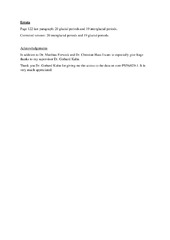| dc.description.abstract | Multi-proxy analysis of gravity core PS56/029-1 have been performed in order to describe sedimentary processes and dynamics under pelagic, turbiditic and contouritic influences. The purpose is to reconstruct climate-controlled environmental change in the Riiser Larsen Sea, Antarctica, through past glacial/interglacial cycles. The gravity core was retrieved during expedition ANTARKTIS XVII/2 of R/V Polarstern in 2000. Data analysis was carried out in a collaboration between the Alfred Wegner Institute, Helmholtz centre for polar and marine research in Germany and the Department of Geosciences at UiT The Artic University of Tromsø.
The core was retrieved from a levee in the central part of a large channel system in the Riiser Larsen Sea, at c. 4000 m water depth and c. 200 km offshore Princess Ragnhild Coast, Queen Maud Land, Antarctica. A multi-proxy analysis was conducted in order to determine depositional environments through past glacial/interglacial cycles. The analysis included physical properties, e.g. magnetic susceptibility, p-wave velocity and wet-bulk density, interpretation of line-scan images and X-radiographs, qualitative element geochemical analysis using an Avaatech XRF Core Scanner and high resolution grain-size distribution analysis using a CILAS 1180 laser granulometer.
Core PS56/029-1 reveals alternating repetitive intervals of poorly sorted and fine-grained sediment accumulated in lighter brownish and greyish coloured intervals. The deposits have a polymodal signature which is interpreted to reflect a mixed pelagic, turbiditic, and contouritic influence, and the more occasional influence of icebergs. Four lithofacies are defined: Laminated Grey Layer (LGL), Grey Layer Thin (GLT), Massive Lighter Layer (MML) and Red Brown Layer (RBL). The greyish coloured intervals LGL and GLT are interpreted to be deposited during glacial periods, including fine sediments attributed to the advancing ice-sheet, along with a more extensive sea-ice, and smaller coastal polynyas. More frequent turbidity currents are suggested to be the explaining factor. The lighter brownish coloured layers MLL and RBL are interpreted to be deposited during interglacial periods, including slightly coarser sediments attributed to a stable or retreating ice sheet, along with less extensive sea-ice cover, and stronger coastal polynyas. Increased bottom-water velocities and denser water masses created in coastal polynyas are suggested to be the explaining factors. | en_US |


 English
English norsk
norsk

